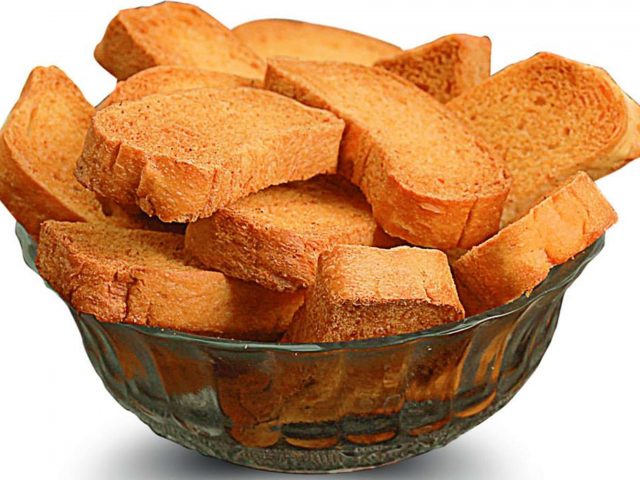The Indian ‘rusk’ or ‘khasta’ has an unbreakable relationship with Indians and at tea time has been a staple snack for decades now.
Even more than the normal biscuit, it is the local rusk that you can find at literally every single tea shop, whether a corner budget or a fancy one, metro city or rural village.
The rusk is virtually inedible as it is, due to the hard form of it, but once dunked into hot chai, it becomes soft and easy to bite into while also being filling in its own way.
Over time there have also come up variations to the common rusk that is just a dried bread sometimes coated in butter. Some of them include the cake rusk, that is closer to the Italian biscotti that is a twice baked bread, or tooti-frooti that is a rusk embedded with flavourful fruit flavoured jelly.
But, rusks are not just available in India, instead are a favourite tea time snack all over the world, be it UK, Africa, Iran or more.

Where Did It Come From?
It said that the first origin of these modern biscuits we eat today could very well have come from 7th century Persia since they were one of the first known areas to not just cultivate but also use it.
Seeing how the basic rusk recipe is wheat, sugar, eggs (some parts of India make it egg-less too), baking powder and butter, it makes sense that Persians of that time would have eventually stumbled onto this recipe.
There are also sources that say that the current ‘rusk’ comes from ancient Greece that originated from the intention of preserving bread for a long time.
The hard, twice-baked and dehydrated bread meant that it would last much longer than the usual bread that would go bad or sour in a couple of days at best.
This way of making bread would also save women from the daily kneading for fresh bread since modern facilities like bread maker and all did not exist at that time.
According to sources, the first known rusk was made by Paxamos, a Byzantine baker and could lead to one understanding why they were called ‘paximadi’ in Greece for some time.
These rusks were also seen as good provisions for the army men, soldiers and those on the sea due to its long shelf life.

Read More: Paradise Hotel Is Overrated, These 5 Biryani Places In Hyderabad Are The Real Deal
Why Are They So Popular In India?
One and a big reason for their popularity in India would be the affordable and economical nature of these biscuits.
Apart from having existed in our country for closer to centuries now, it is their budget pricing that has remained constant till now that makes it such a popular snack.
Unlike other biscuits or such that have either gone out of style or have raised their prices, you can still get a rusk for basic change.
This has allowed it to sustain its place in tea shops across most of north India and some parts of South as well.
Image Credits: Google Images
Sources: Wikipedia, Dawn, ifood.tv
Other Recommendations:
http://edtimes.in/2018/05/controversial-history-of-rasgulla-and-the-age-old-fight-over-its-origin-between-bengal-and-orissa/


































